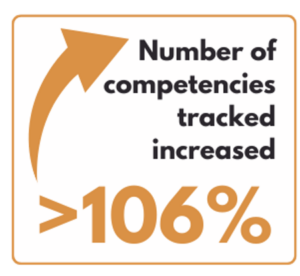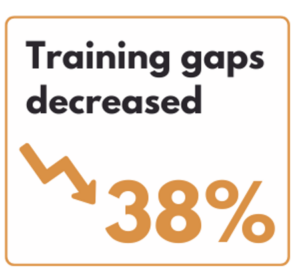
TRAINING GAP ANALYSIS
Underground Coal Mine
CLIENT
Australian Underground Coal Mine
OBJECTIVE
Core Crew Training was engaged to conduct a comprehensive analysis of the client’s existing training data to assess the effectiveness of their workforce development programs. By evaluating training records, and competency frameworks, our objective was to identify gaps in knowledge, skills, and compliance requirements.
This analysis provided valuable insights into areas where additional training or upskilling was needed, enabling the client to enhance workforce capabilities, improve operational efficiency, and ensure alignment with industry standards and compliance with statutory requirements.
THE CHALLENGES
The client struggled with several obstacles impacting the effectiveness of their training programs. Some of the key challenges were:
- Inconsistency in the client’s existing training data, making it difficult to evaluate and address skill gaps.
- A misalignment between current training programs and the evolving needs of the workforce.
- Lack of a centralised training database, causing inefficiencies.
APPROACH
Our structured approach ensures an efficient and transparent process for assessing and improving workforce competency compliance:
✅ Data Collection & Analysis – Gathering and evaluating workforce competency data.
✅ Data Mapping – Structuring and aligning data for meaningful insights.
✅ Visual Representation – Transforming data into clear, actionable visuals.
✅ Training Forecasting – Predicting future training needs based on trends.
✅ Dashboard & KPI Tracking – Monitoring progress and performance in real-time.
This streamlined process enables data-driven decision-making and continuous workforce improvement.
OUR RESULT
Our structured approach delivered significant improvements in workforce competency management. By addressing inconsistencies in the client’s existing data, we provided a centralised, accurate, and easily accessible training matrix. This streamlined data management enabled better alignment between training programs and workforce needs, reducing inefficiencies and ensuring compliance with statutory requirements.
Some key outcomes were:
- Resolved inconsistencies by creating a structured, worker-specific TNA Matrix.
- Identified high-demand training areas for strategic planning.
- Developed a custom dashboard delivered key metrics and compliance tracking.
- >106% increase in competencies tracked.
- Training gaps decreased from 39% to 24%.

